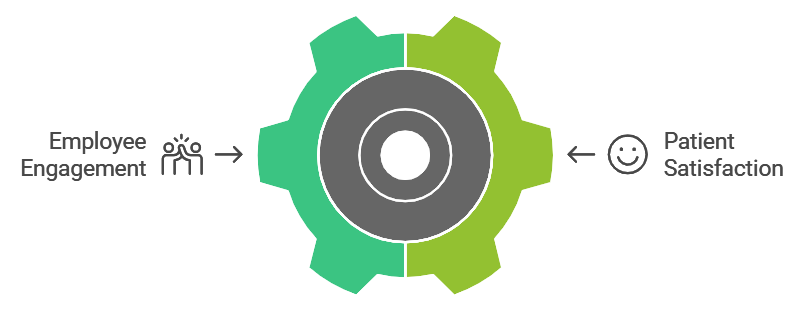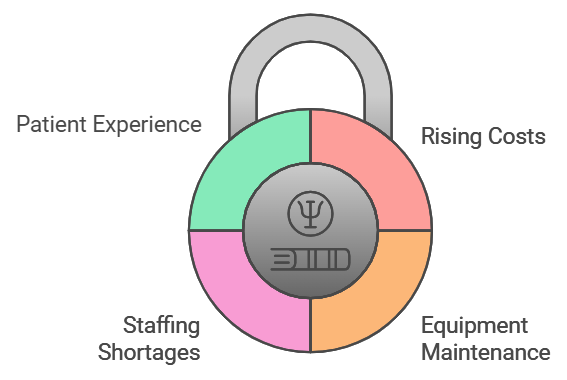Workflow Optimization in Healthcare
Running a clinic successfully hinges on how smoothly day-to-day operations are handled. Using electronic health records (EHR) and utilizing meaningful use practices can really help clinic managers and administrators find the sweet spot in operations, making it easier to look after patients and run schedules like clockwork.
Making the Most of Electronic Health Records
Electronic Health Records aren’t just fancy files on a computer; they’re game-changers for clinic workflows. They take the old paper shuffle and turn it into a streamlined, error-reduced, conversation-enhanced way of doing things. Do you know how doctors sometimes play detective with patient info? EHRs make that Sherlock Holmes-type work a lot more efficient. They allow everyone on a healthcare team to look at the same information, make quick decisions, and keep tabs on how patients are doing without everyone going stir-crazy over paperwork.
Beyond being efficient, EHRs help clinics deliver top-notch care, which is safer for patients and more organized for everyone involved (HealthIT.gov). Having patient information available at the click of a button helps healthcare folks make smart choices, monitor patient health, and get their ducks (and maybe patients) in a row.
Clinics can team up their EHR systems with practice management software to really nail patient scheduling and eliminate waiting times. This pairing is like Batman and Robin for appointments, ensuring everything runs smoothly and patients aren’t left twiddling their thumbs.
Getting into the Groove with Meaningful Use
Meaningful use of EHRs isn’t just a tech buzzword—it’s a lifeline for clinics trying to get the best out of their electronic records. It’s about getting honest with patient care, boosting how information is shared, and getting patients involved in managing their health (HealthIT.gov). When clinics tick the right boxes for meaningful use, they find that their data becomes more accurate, everything works better together, and decisions are backed by objective evidence.
When used to its full potential, EHR technology can really lift the level of care clinics provide. Clinics can see improvements from how data is shared to the outcomes for their patients.
By weaving electronic health records into daily workflow practices and following meaningful use protocols, clinic managers can get a handle on operations that make patient scheduling a breeze and healthcare services more effective.
Key Performance Indicators (KPIs) for Efficiency

Regarding clinic operations, keeping things running smoothly is like running a well-oiled machine. To check if you’re on the right track, take a peek at two game-changer key performance indicators (KPIs): employee engagement and patient satisfaction.
Employee Engagement Metrics
Employee engagement metrics are your clinic’s wellness check and help determine your team’s happiness and commitment. According to experts at ClearPoint Strategy, healthcare folks face burnout more than in other gigs. Keeping an eye on these metrics can clue you into how your staff feels about their workload, job satisfaction, and overall happiness at work, which affects how smoothly your clinic operates.
Some top-notch companies, like Zappos and Marriott International, have shown that investing in training can boost efficiency big time (Vorecol). Walmart, for one, saw a drop in blunders and a boost in hustle after rolling out training that hit the mark (Vorecol).
Clinics can use surveys, get feedback, and run performance reviews to gauge employees’ feelings. It’s all about nipping problems in the bud and creating a vibe of constant growth, which lifts team spirit and productivity and smooths out operations like butter.
Patient Satisfaction Tracking
Patient satisfaction isn’t just a nicety; it’s a must-have for your clinic’s efficiency. Happy patients tend to return and tell their pals, ensuring loyalty and growth. This KPI is vital for bringing in the bucks and delivering top-notch care and clinical results.
Simply ask patients what they think through surveys, online reviews, or just a good chat. Being proactive about patient concerns builds a stronger bond with them and amps up their experience at your clinic.
Focused clinics nail improvements in getting patients in and out smoothly and chopping down wait times, creating a breezy workflow (cutting down wait time in clinics). Tech goodies like management software for patient scheduling can splash some efficiency into the whole process by keeping things ticking along nicely.
By paying attention to both how your staff’s doing and what your patients feel, you’re setting up a slam-dunk environment where your crew thrives, patients rave, and the clinic runs sharp. Keeping tabs on these KPIs and acting fast on hiccups can mean significant, lasting performance and patient care boosts.
Utilizing Practice Management Systems
When running a clinic, tapping into practice management systems is like giving your operation a turbo boost—especially when it comes to billing and swapping information more efficiently.
Billing Process Automation
Let’s face it: billing is a headache. Practice management systems make this mountain a molehill. These high-tech helpers automate the billing process so that all those annoying invoices get done right. They cut down revenue leaks and ensure cash flows like a river. Ain’t nobody got time for those manual data entry goof-ups. With automation, everything clicks. You eliminate billing mistakes and smooth out the process, making sure everyone’s happy—especially insurance folks waiting to pay up. Clinics jumping on this bandwagon often see their finances looking sharper and crystal clear without all the guesswork.
Streamlining Information Sharing
Imagine trying to run a clinic, but everyone’s speaking a different language. Practice management systems kind of act like translators, letting everyone from doctors to patients and even pharmacies stay on the same page. Thanks to the internet, these systems give people instant access to anything from records to test results, making healthcare feel like a team sport where everyone’s in the loop. Sharing important info quickly means less runaround for patient referrals and faster care.
This software is like hiring a virtual ninja—it tackles the boring admin stuff so your staff can shine where it matters. Fewer headaches with the day-to-day logistics mean doctors and nurses can focus on what they signed up for—caring for folks.
For small clinic managers, embracing these systems can revolutionize operations. You boost productivity, streamline operations, and offer patients top-notch care, making both your bookkeeper and your patients pretty happy in the process.
Addressing Healthcare Challenges

Healthcare clinics have their hands full—juggling a million things at once. Keeping operations running smoothly while still delivering outstanding care to patients? Well, that’s the gold standard. But let’s just say the path doesn’t come without a hurdle or two. Two significant issues knocking on the clinic door are—sky-high costs and a staff shortage. Of course, we’ve got our eyes locked on making every patient’s visit a good one, too.
Rising Costs and Equipment Maintenance
Healthcare costs’re like that annoying song that won’t quit playing in your head. The culprit? Medical gear has become fancier, meaning you’re shelling out more money for those bells and whistles. Not to mention the specialists you’ll need to keep everything shipshape; imagine the pyramid of chaos if a defibrillator or an X-ray machine threw a fit right when needed most.
| Why Are Costs Going Up? |
| Medical equipment’s turning into science fiction gadgets |
| Gotta pay the specialists who keep it all working |
| Regulations and rules are more loaded than ever |
Keeping everything purring like a well-oiled machine isn’t just about saving some dough— although that’s a nice bonus. It’s about keeping patients and staff away from those ‘uh-oh’ moments. Jump on maintenance tasks before they scream for attention, and you won’t just save cash on rushed repairs but will keep everything ticking along without a hitch.
Staffing Shortages and Patient Experience
Now, about those folks who keep the clinic rolling—there just aren’t enough of ’em sometimes. Staffing shortages can put even the smoothest operations in rough waters. You can’t deliver that top-drawer care everyone’s expecting if you’re short on hands. Dragging your heels on hiring and technology hurdles can impact patient care.
But that’s not all. Clinics need to master the patient experience. Walking into a doctor’s office should feel more like stepping into a friendly neighborhood rather than an episode of a medical drama. Clear communication, shorter wait times, and making a patient feel welcome are the top priorities for healthcare centers.
So, what next? Clinics can’t sit around twiddling their thumbs. They need to get cracking on better scheduling, invest in tech that will make life easier for everyone, and ensure staff are getting the training they need to be superstars. Tackling these hurdles can turn challenges into opportunities for clinics to refine their game and deliver care and exceptional care to every patient who walks through those doors.




